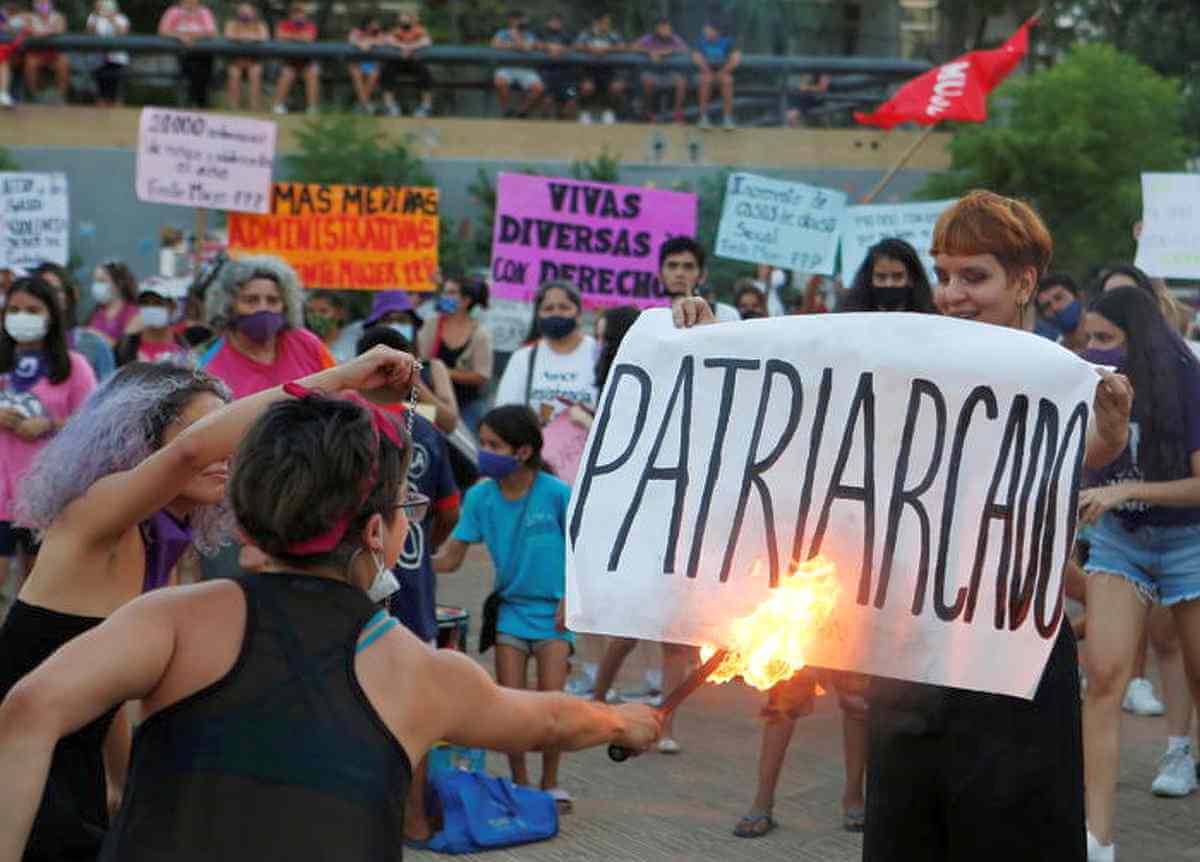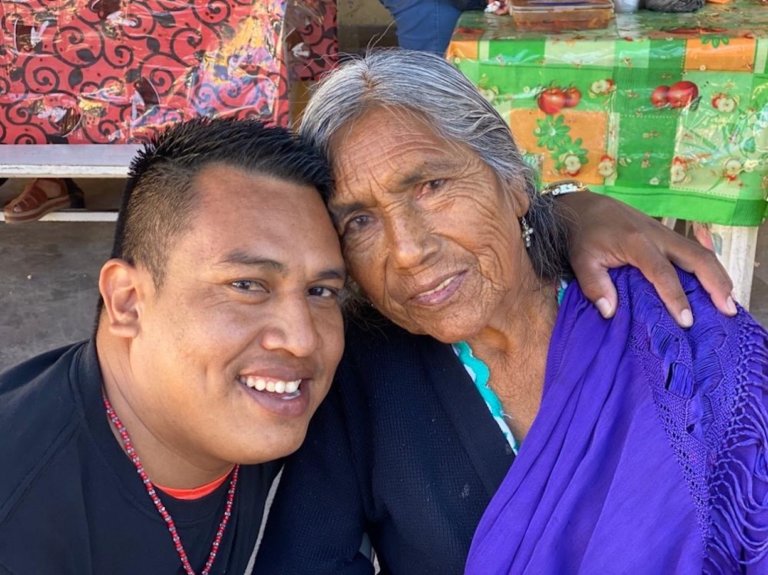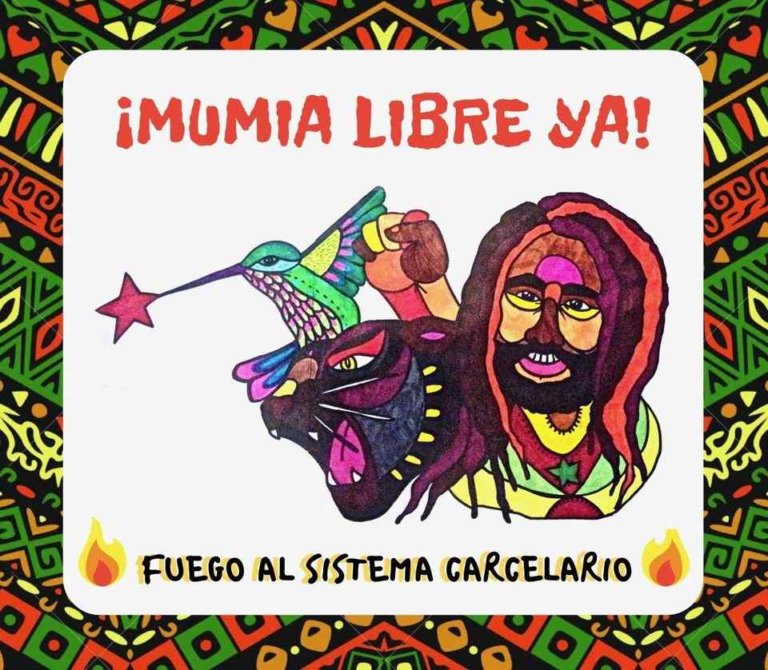By Carolina Saldaña
On March 8th, International Women’s Day was celebrated all over the world with actions, gatherings, memory, dance, poems, sadness, joy, repression, courage, rebellion, marches and rallies in the streets and plazas of the world, and in some prisons, too. 
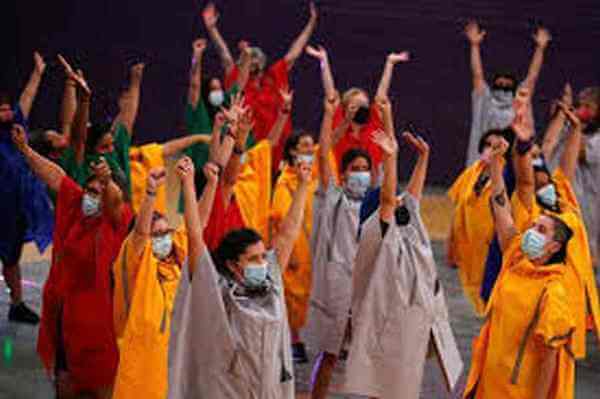
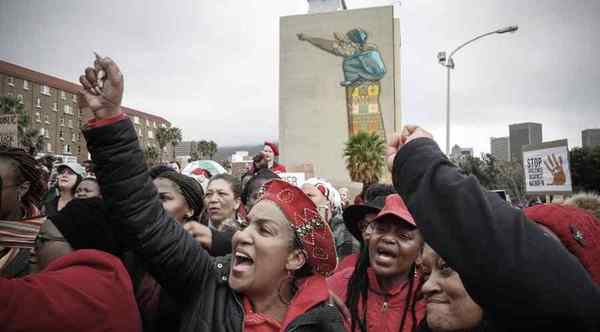
Actions were especially strong here in Mexico, where 11 women every day are targets of feminicide. 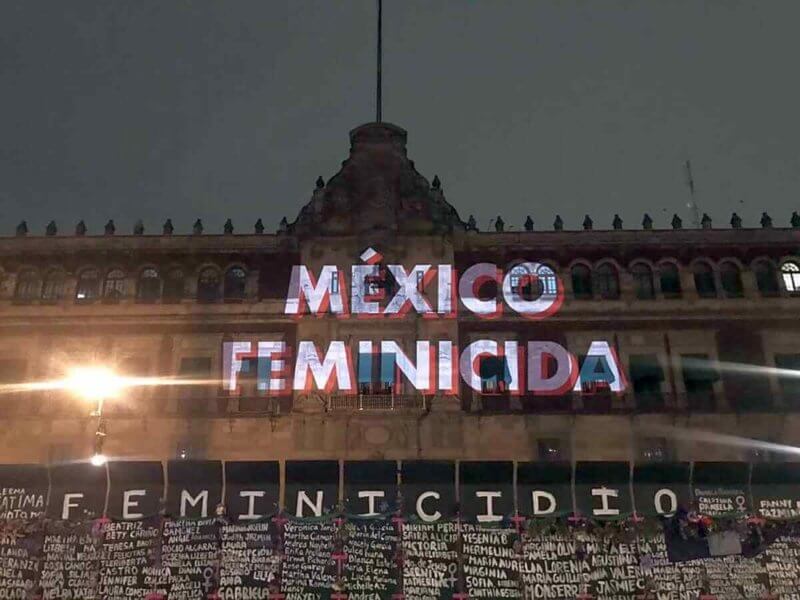
For over a year, feminists have responded to murder, rape and forced disappearances with an escalation of bold actions to demand justice in cases of rape, the right to abortion, and an end to feminicide. 
A few days before the international commemorations this year, Mexican President Andrés Manuel Lopez Obrador (AMLO) proclaimed his support for women’s equality, suggesting that under his government with its strong commitment to women’s rights, there would really be no need for a protest in the Zócalo of the capital city. His position was seconded by his Mexico City counterpart, Claudia Sheinbaum, who announced that at any March 8th demonstrations all the police would be women. Just in case activists were able to get into the city’s main plaza, however, she ordered the installation of tall metal barriers to “protect” the National Palace situated there.
“It was a wall of peace, not repression,” said AMLO, affirming that the right to peaceful protest would be respected. Metal barriers were also installed at key points of a projected march. For two days, creative women adorned the ugly barricades in the Zócalo with flowers and the names of hundreds of victims of feminicide. 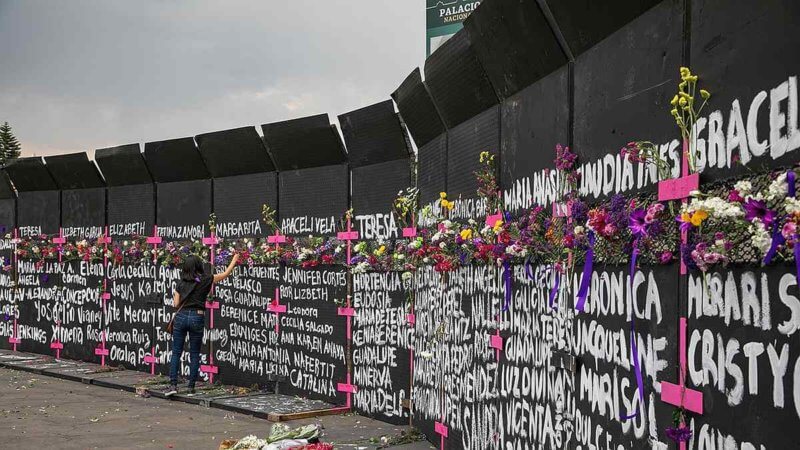
At 8 o’clock on the morning of March 8th, all the entrances to the Zócalo were closed.
The writer, diplomat and TV Azteca host Andrés Roemer, denounced by more than 60 women for sex abuse, ordered a large barrier to be set up outside his home. Early in the morning before the march began, indignant women went there to paint accusations and slogans on it. His house was then protected by 80 city police officers. 
As one group of feminists headed towards the starting point of the 7-mile march at the Monument of the Revolution, they were detained by city police outside the Hidalgo subway station and kettled for almost four hours. Thousands of women surrounded the cops who were holding them there and shouted for their release. 
Four photo-journalists were also attacked by city police, this time inside the Hidalgo subway station. A reporter for EFE, Sáshenka Gutiérrez, reported that around noon, dozens of agents beat, kicked, handcuffed, and pulled the hair of the women, trying to take away their cameras and refusing to let them leave the station. The other three journalists were Gabriela Esquivel, of 24 Horas; Leslie Pérez, of the Heraldo de México, and Graciela López, of Cuartoscuro.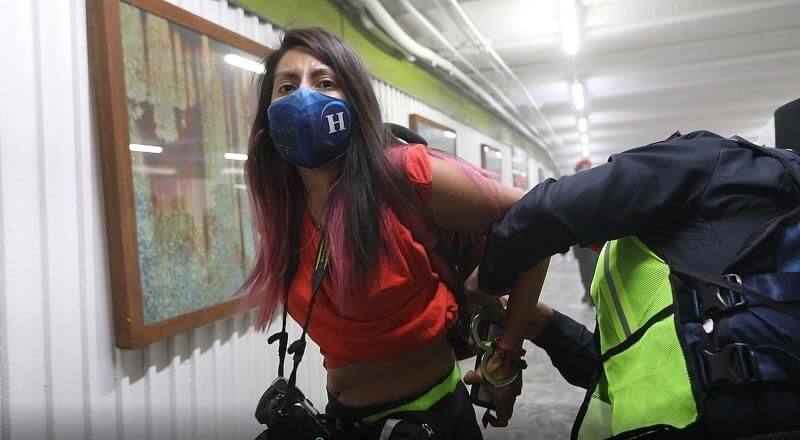
The reporters, as well as the women kettled, told their stories to the Marabunta human rights activist group, which has played a positive role in demonstrations in Mexico for several years, giving objective press coverage, first-aid, respect for the words and actions of protesters, and help in negotiating difficult situations with the authorities. 
After the initial police repression, around 30, 000 women and supporters set out for the Zócalo in a peaceful march. On the way, some attacked the hated metal barriers with hammers, blowtorches and lassos, and succeeded in toppling a few of them.
Demonstrators were slowly allowed to get into the Zócalo, one small group at a time, where families and friends of assassinated women told their stories. There were some differences of opinion among those assembled about the best way to proceed with the action. 
AMLO was repeatedly denounced for supporting the candidate of the Morena party for Governor of the state of Guerrero: Felix Salgado Macedonio, a politician charged with at least three rapes. And feminists made it clear that they have not forgotten the scorn expressed by the President of Mexico for claims of violence against women. As reported by the New York Times, he stated his belief last May that “90 percent of calls denouncing domestic violence are false”. 
As one woman after another took the microphone, others attacked the metal barriers. In the face of gas from fire extinguishers, rubber bullets, clouds of tear gas, gotcha bullets, and threats, they were able to bring down seven of them. 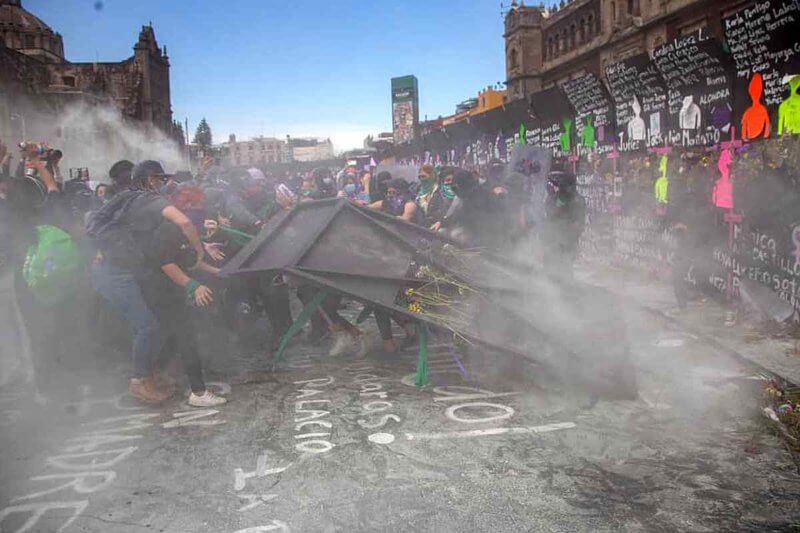
One comrade was dubbed “La Reinota” for her courage in throwing back teargas canisters at the police.
https://www.youtube.com/watch?v=yE7tqBQ-QOg
In the midst of the confrontation, 15-year-old Abril Fragoso was taken captive by the police, which led to a prolongation of the protest as participants set fires in the Zócalo and shouted for her release. 
When this did not happen, they warned Claudia Sheinbaum and her Minister of Security that they would be held responsible for any harm that might befall her. 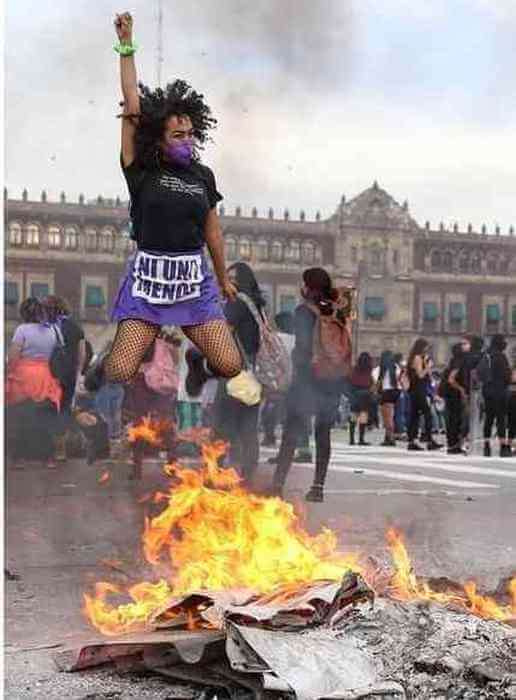
During the afternoon, concern was expressed about apparent sharpshooters on the roof of the National Palace. Although presidential spokesman Jesús Ramírez Cuevas clarified on Twitter that the officers were carrying drone inhibitors, not automatic weapons, many observers believe that their presence was an effort to intimidate the crowd. 
Marabunta publicly accused the capital city police of responding to the protest with extreme violence. The following day, AMLO laid the blame on the women resistors, stating that their protest was a provocation against his progressive government and that he had never before seen activists come to a rally equipped with hammers. He also accused Marabunta of making false statements and swore that city police had not used teargas, rubber bullets or gotcha bullets to quell resistance.
https://videos.jornada.com.mx/media/videos/86016084.mp4
24 hours after thousands of women in Mexico City demanded an immediate end to feminicide and violence against women, the Mexico City government scrupulously cleansed the Zócalo, erasing any trace whatsoever of resistance.
In the words of Gloria Muñoz Ramírez:
The Mexico City Zócalo tonight.
In less than 24 hours the names of the murdered and disappeared women were erased, the slogans on the asphalt plate, the names of the rapists on the flagpole. Nothing happened here. There were no purple flowers or green ribbons, no banners or white paint. Nothing happened here. No tear gas bombs or gotcha bullets from the roof of the empire. There was no kettling for 4 hours of 30 women outside the Hidalgo subway station, nor were photo-journalists assaulted and handcuffed. The mothers did not come here to demand justice, nor the young women to sing without fear. Nor were there girls flying kites, or old women painting a police shield blue. Nothing happened here.
Let them believe it. We know.
